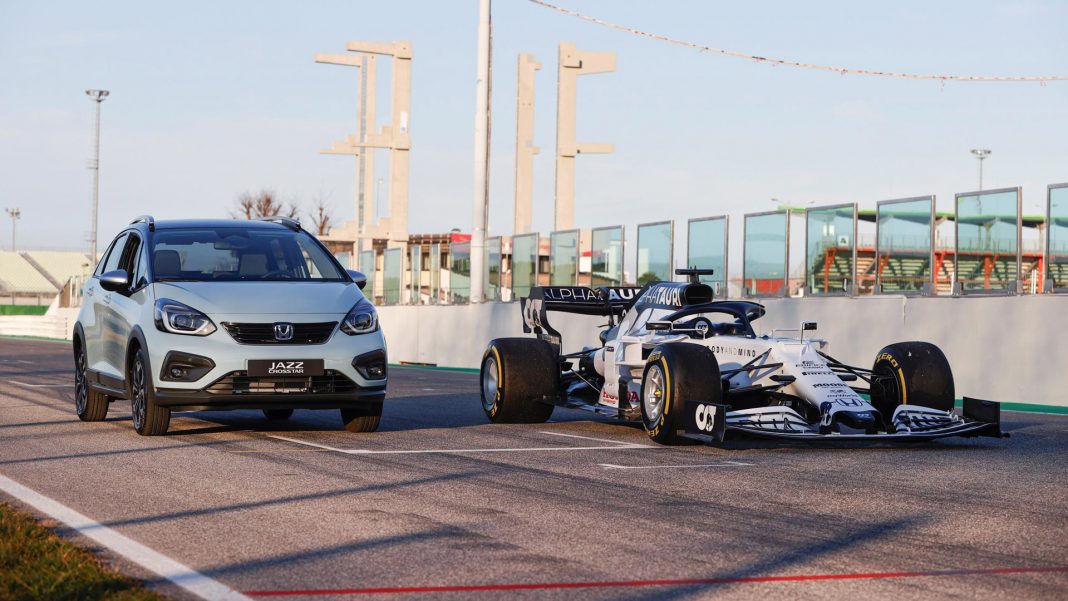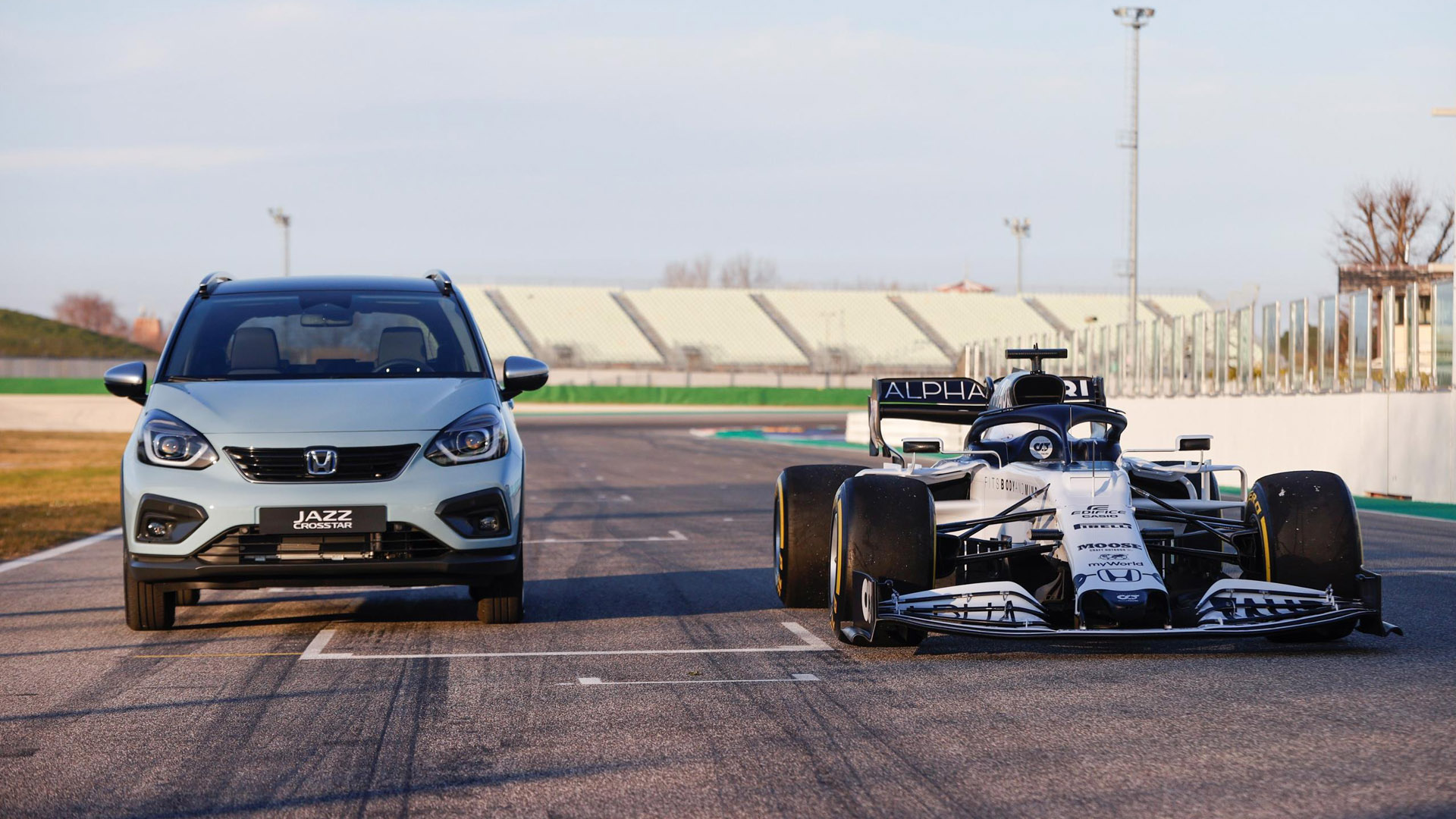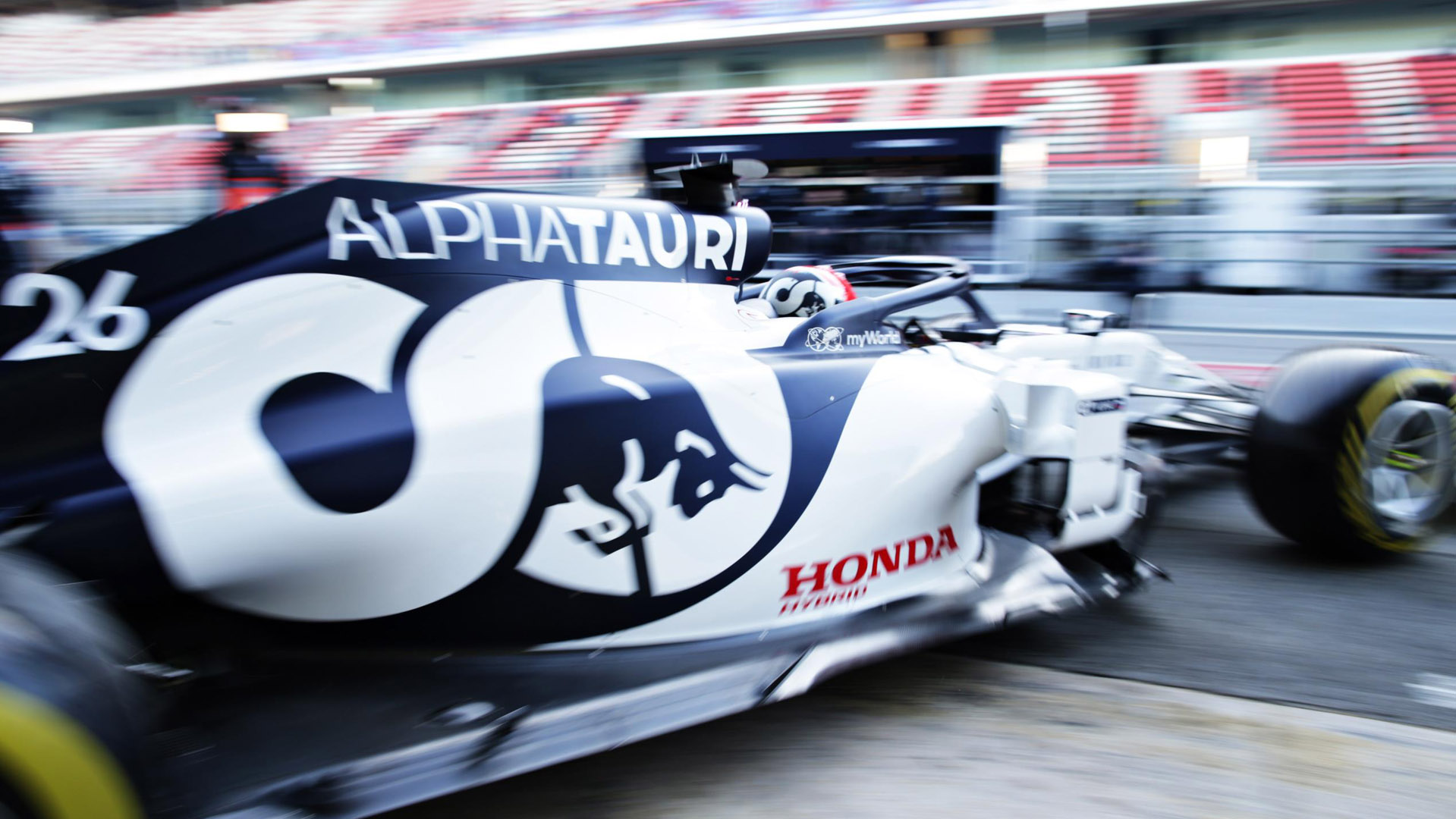It might be surprising to see the Honda Jazz hatchback sat side-by-side with a Formula 1 racing car, but it’s even more astonishing to learn that the Jazz’s 71 kW (97 hp) 1.5-litre petrol e:HEV hybrid engine is inspired by the latest Honda Formula 1 Hybrid Power Unit, the RA620H.
Read next: Formula E: Everything you need to know about this electrifying motorsport
Using engineering expertise from its motorsport team, Honda has drawn knowledge from its Formula 1 Hybrid Power Unit (PU) programme to improve the energy efficiency of the brand’s e:HEV hybrid system.
The PU uses a highly efficient 1600cc six-cylinder internal combustion engine and works in tandem with the vehicle’s Energy Recovery System. This allows for the energy produced in the brakes and exhaust to give a boost in acceleration; when utilised correctly, it reduces turbo lag.
Unsurprisingly, Formula 1 engineers are always looking to tweak the ratio of energy recovered and deployed by the hybrid system, in order to deliver the best on-track performance. As such, these expertise have trickled down to Honda’s range of e:HEV powertrains found in the automaker’s passenger cars.
Read next: Extreme E: The electric off-road racing series
Yasuaki Asaki, Head of PU Development explains: “During a Formula 1 race weekend teams have to manage very carefully how much fuel they use to comply with the sport’s regulations. In a race we can divide the total fuel allowance over the number of laps, but there are going to be situations where a team might wish to use more fuel in order to get higher performance and in other parts of the race they will want to save fuel for later, while behind a safety car for example.”
“In a race, the communication between the race engineer and the driver is key to achieving that best balance. However, in our road-going e:HEV hybrids we apply our expertise to ensure the Powertrain control units deliver the best possible power to efficiency ratio for the driver, in any required driving mode.”
As such, the new Jazz will be engineered to deliver optimum fuel efficiency and provide “an enjoyable driving experience”. It consists of two compact electric motors, which are connected to a 1.5-litre DOHC i-VTEC petrol engine, a lithium-ion battery and a fixed-gear transmission via an intelligent power control unit.
Read next: What is an EV? Everything you need to know about hybrid and electric vehicles
To better the overall driving, Honda has set-up three interchangeable drive modes with its e:HEV hybrid:
- EV Drive, where the lithium-ion battery supplies power to the electric motor
- Hybrid Drive, which kicks the engine into action and works with the motor
- Engine Drive that solely relies on the petrol engine to propel the car forwards
Buy a car phone mount on Amazon (Affiliate)
In most situations, EV Drive and Hybrid Drive will be the preferable choice – as less petrol is consumed. Move to the motorway and Engine Drive will provide a better driving experience thanks to its added boost in power.
It’s worth knowing that in Hybrid Drive mode, excess power from the petrol engine can also be diverted to recharge the battery. EV Drive also harvests energy through regenerative braking.
Rather than using a conventional transmission, the new Jazz is equipped with a newly-developed Electronically Controlled Continuously Variable Transmission (eCVT) with a single fixed-gear ratio to create a direct connection between moving components. This should result in a smooth transfer of torque across all drive modes.







